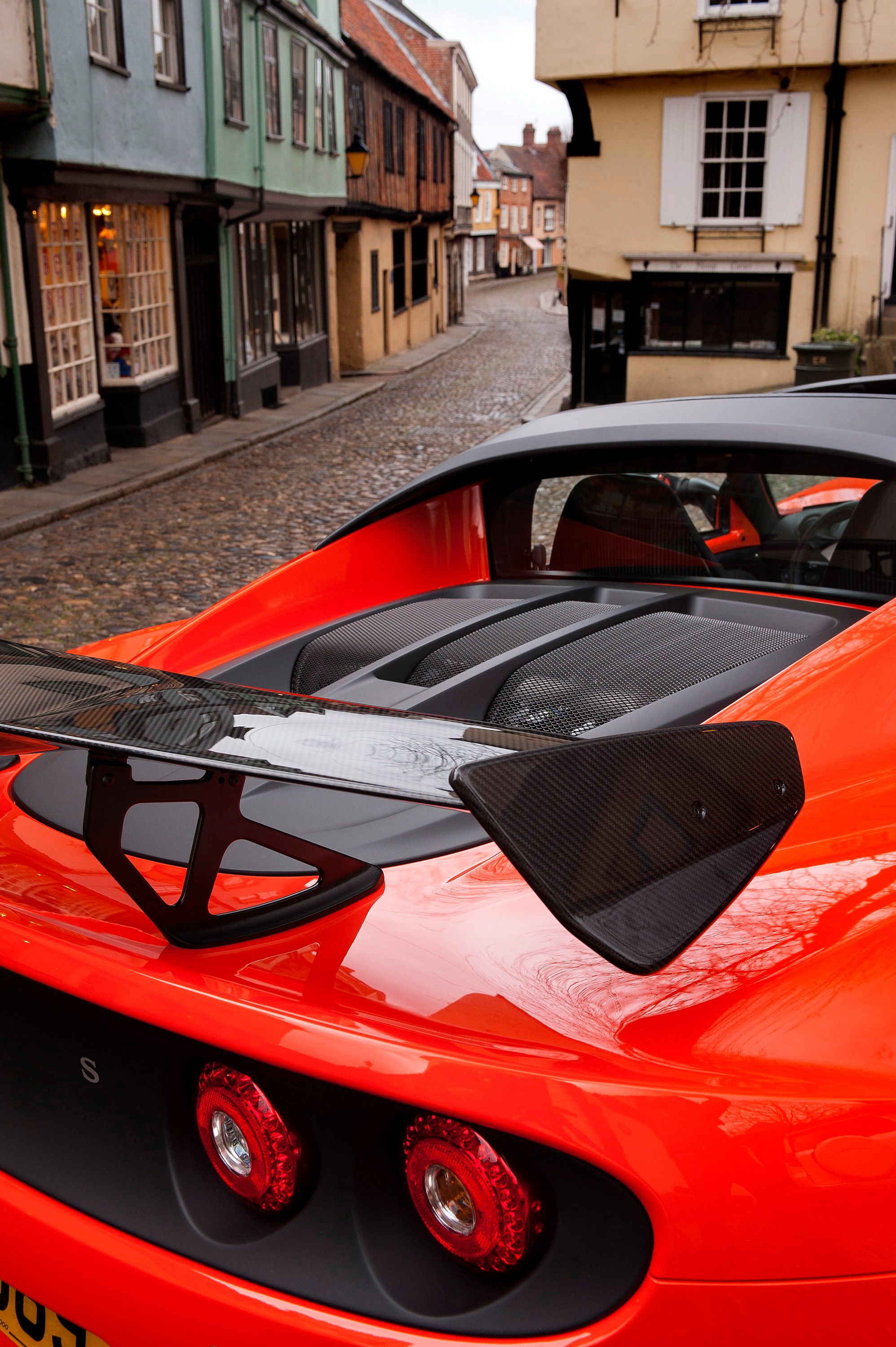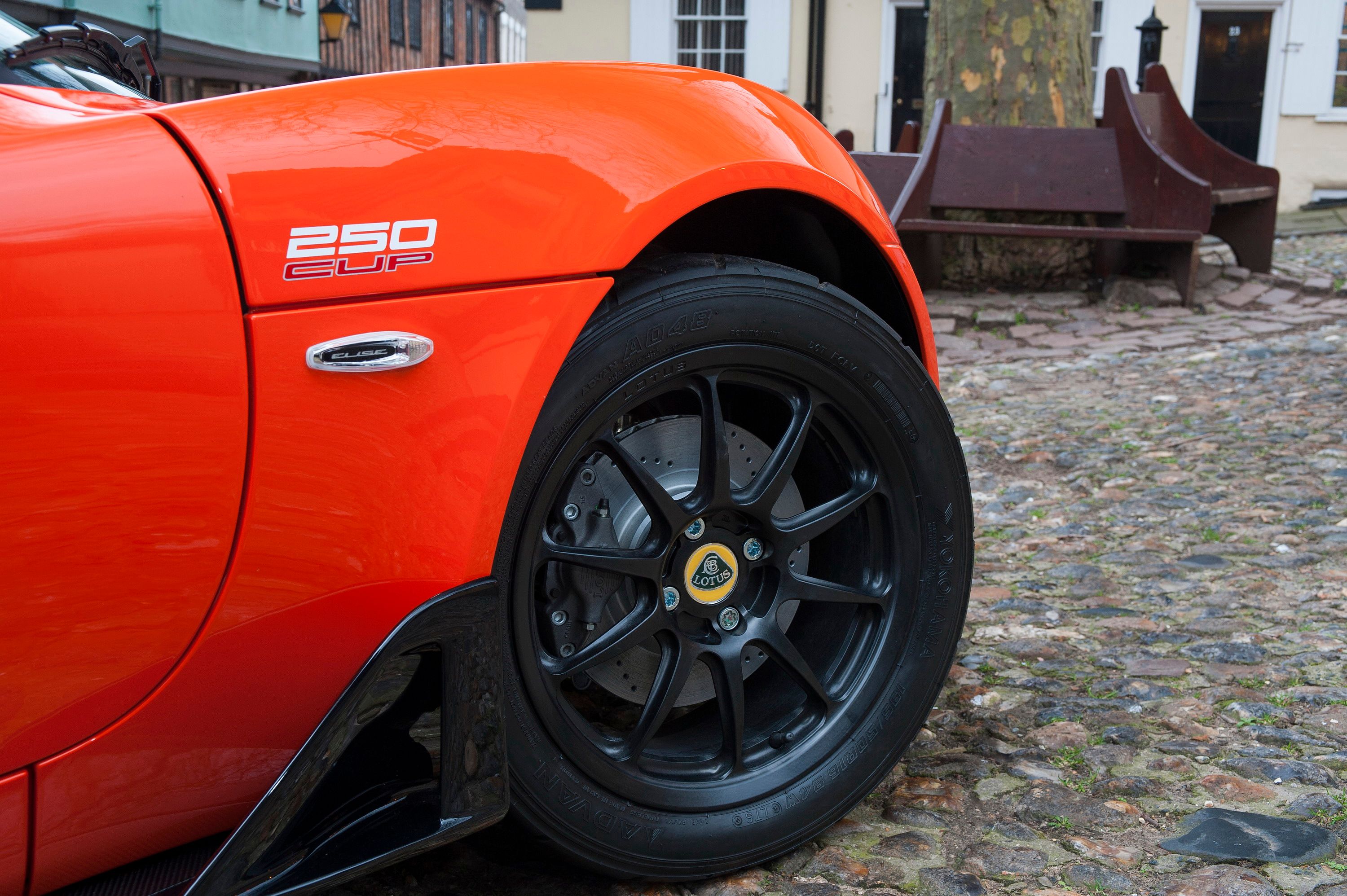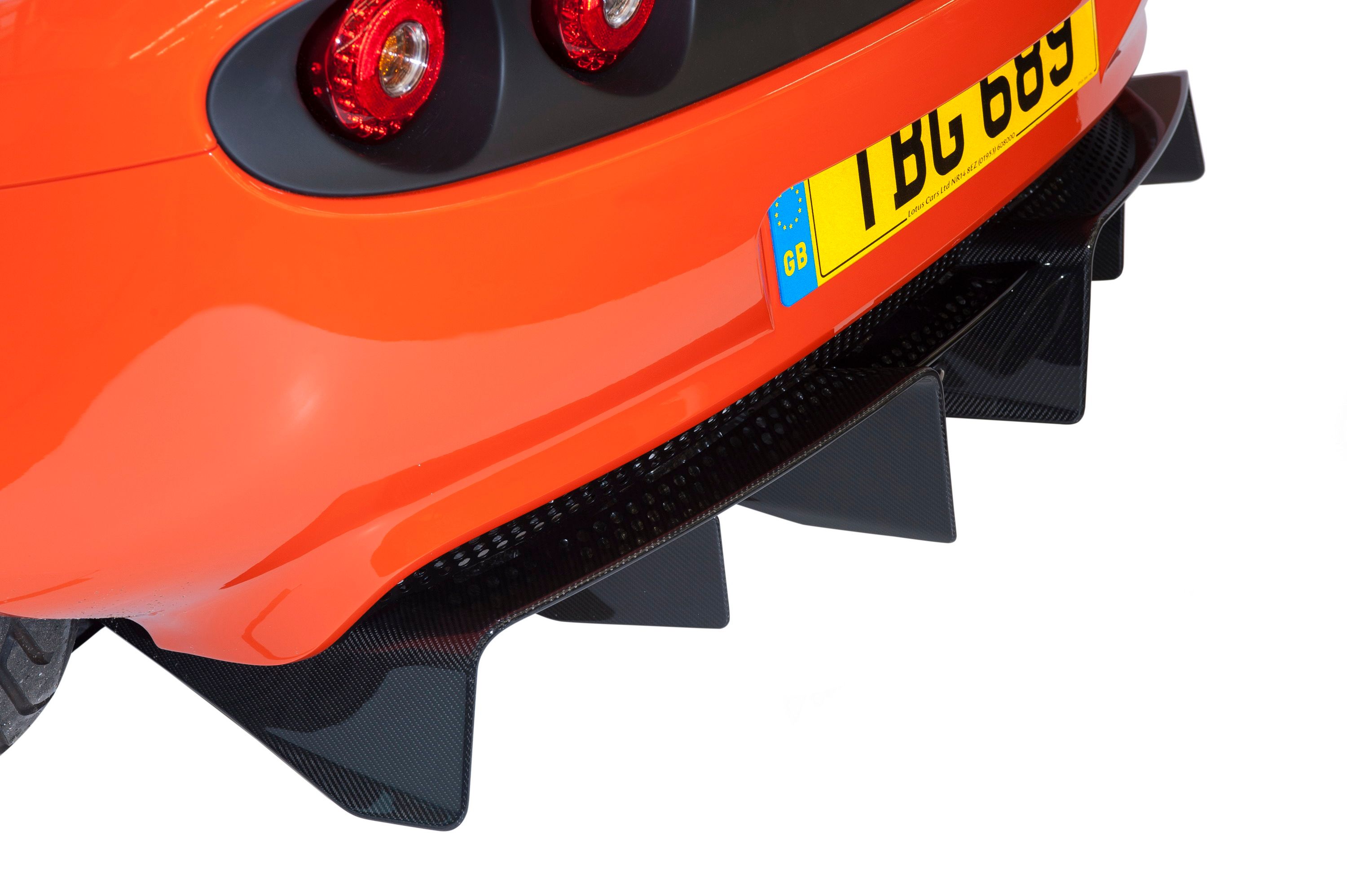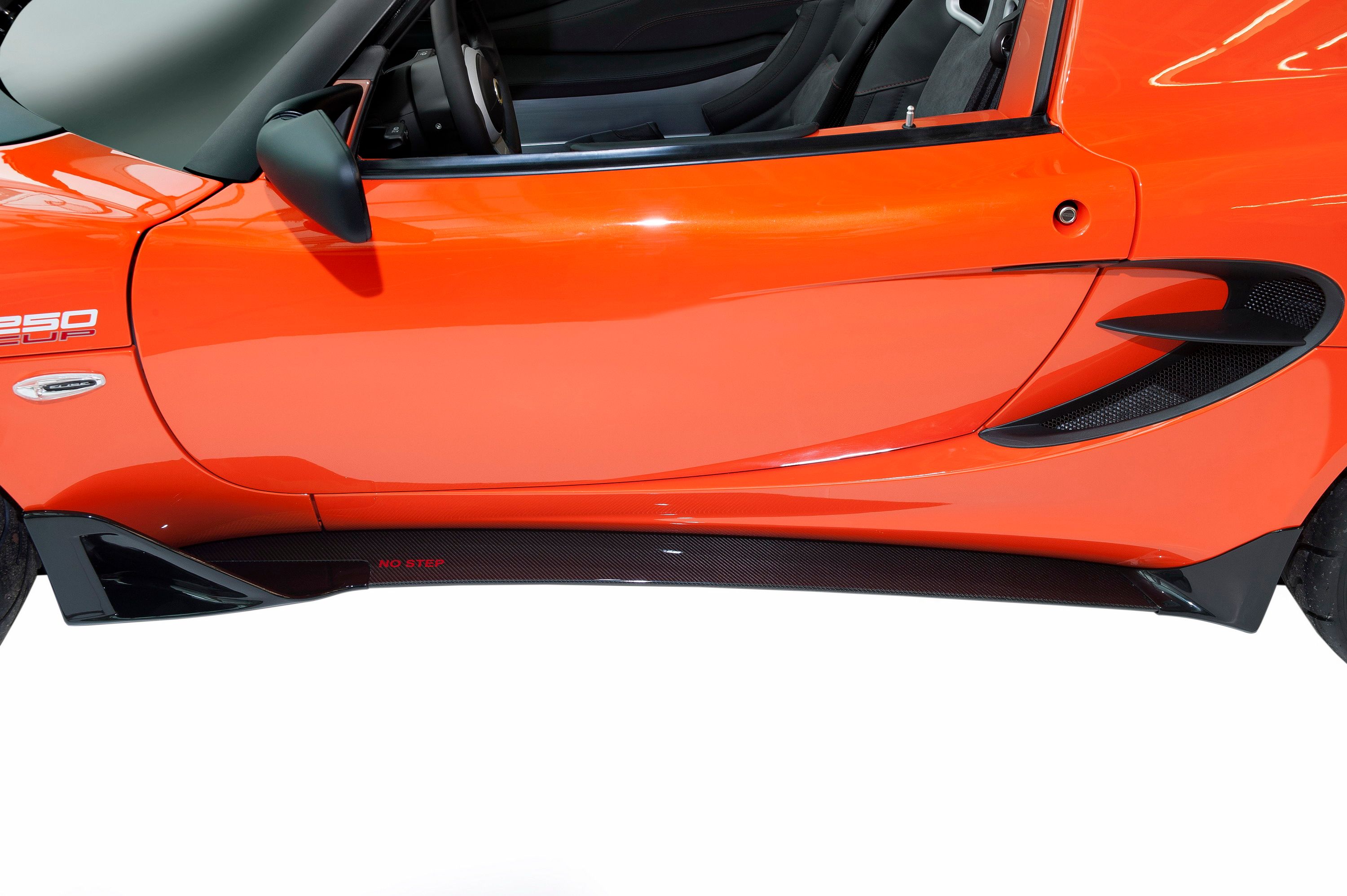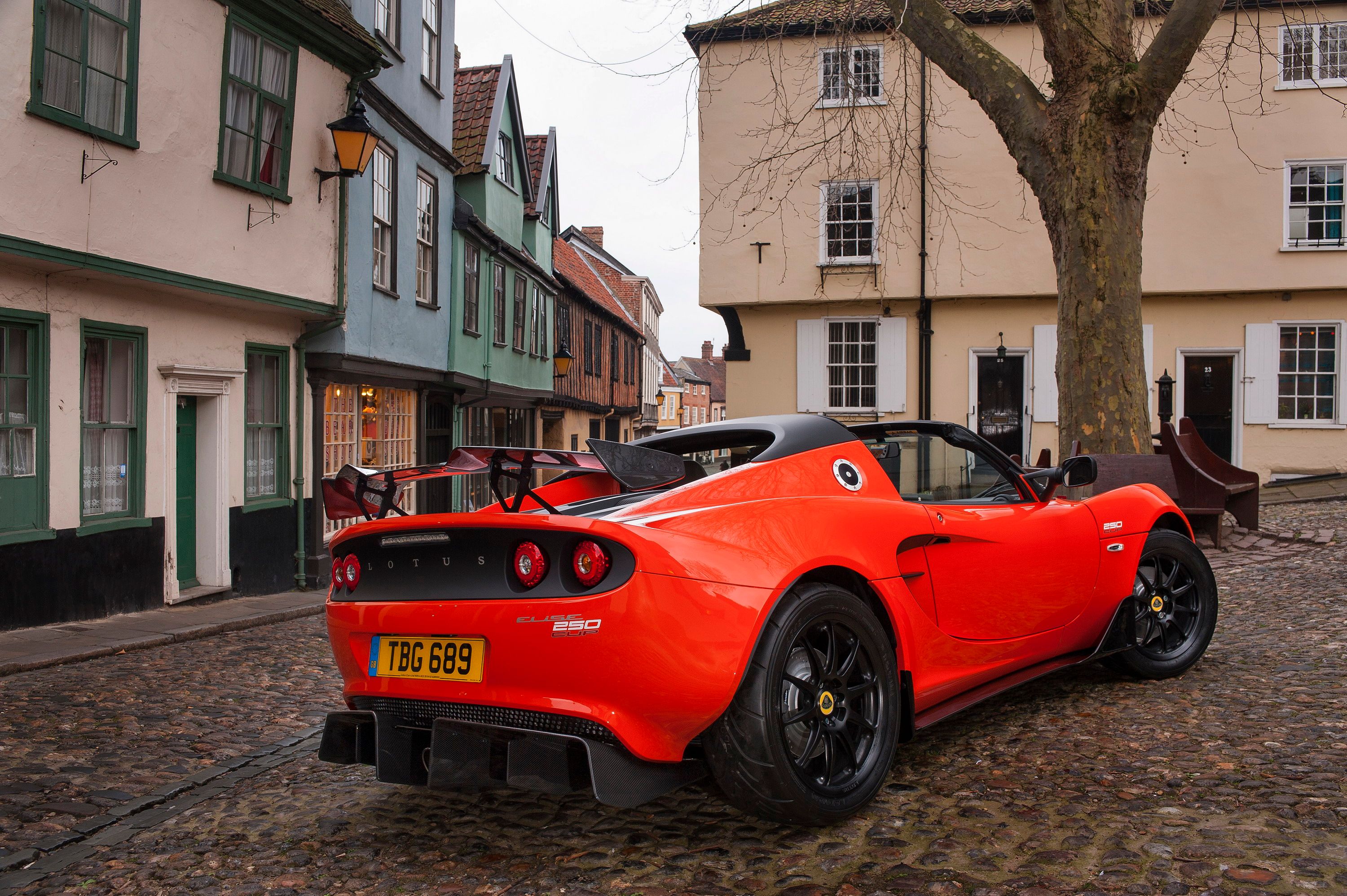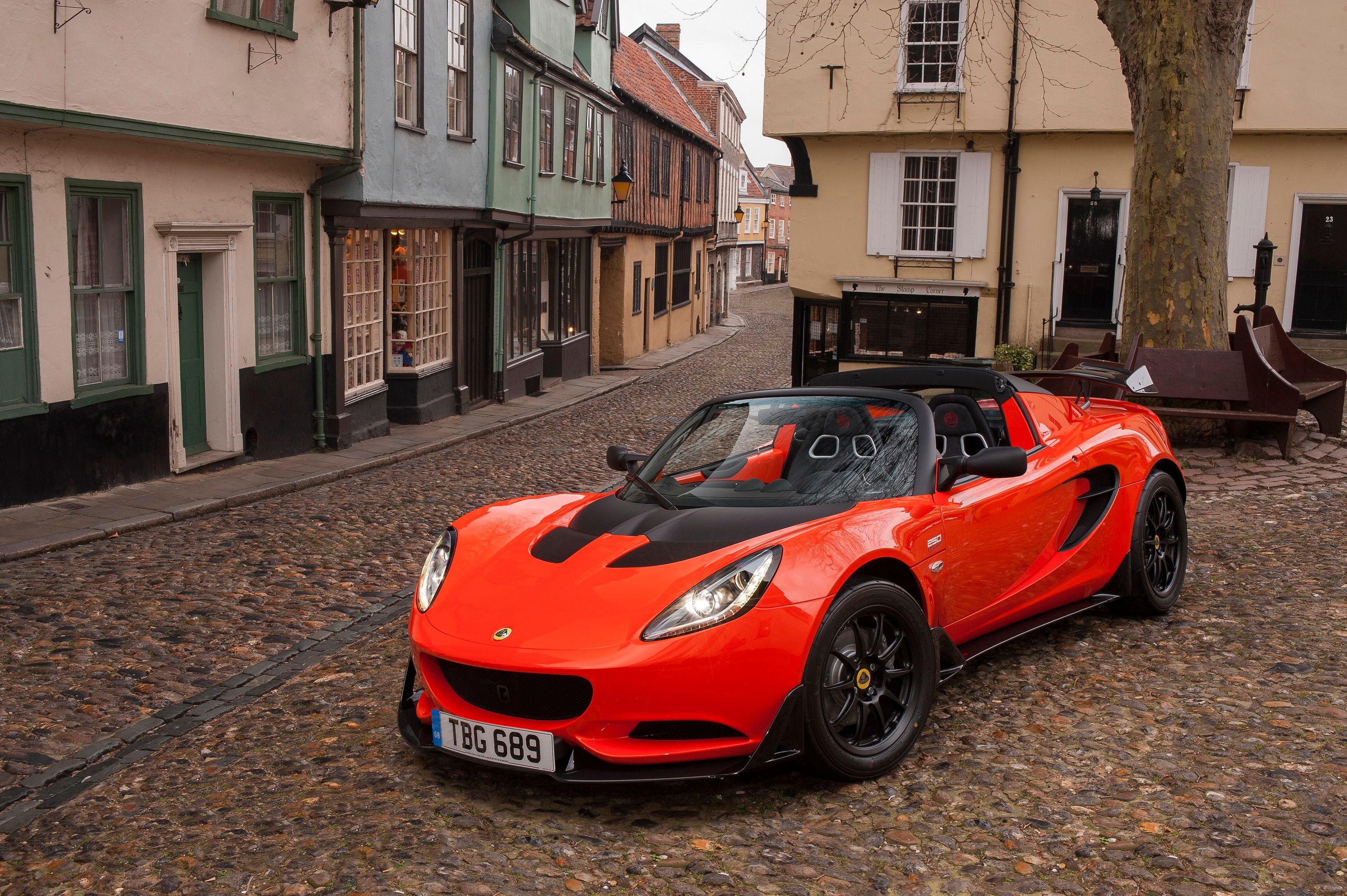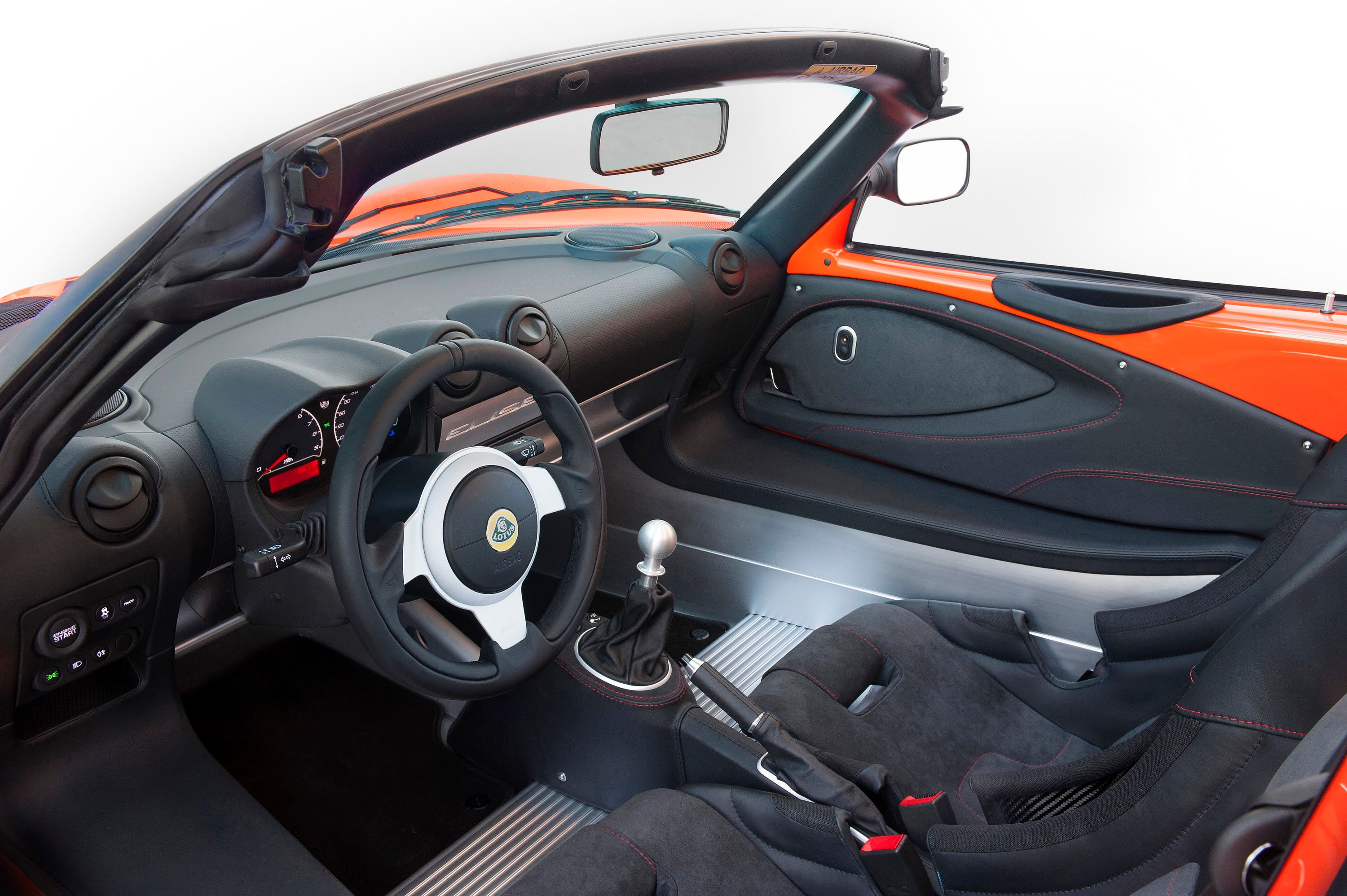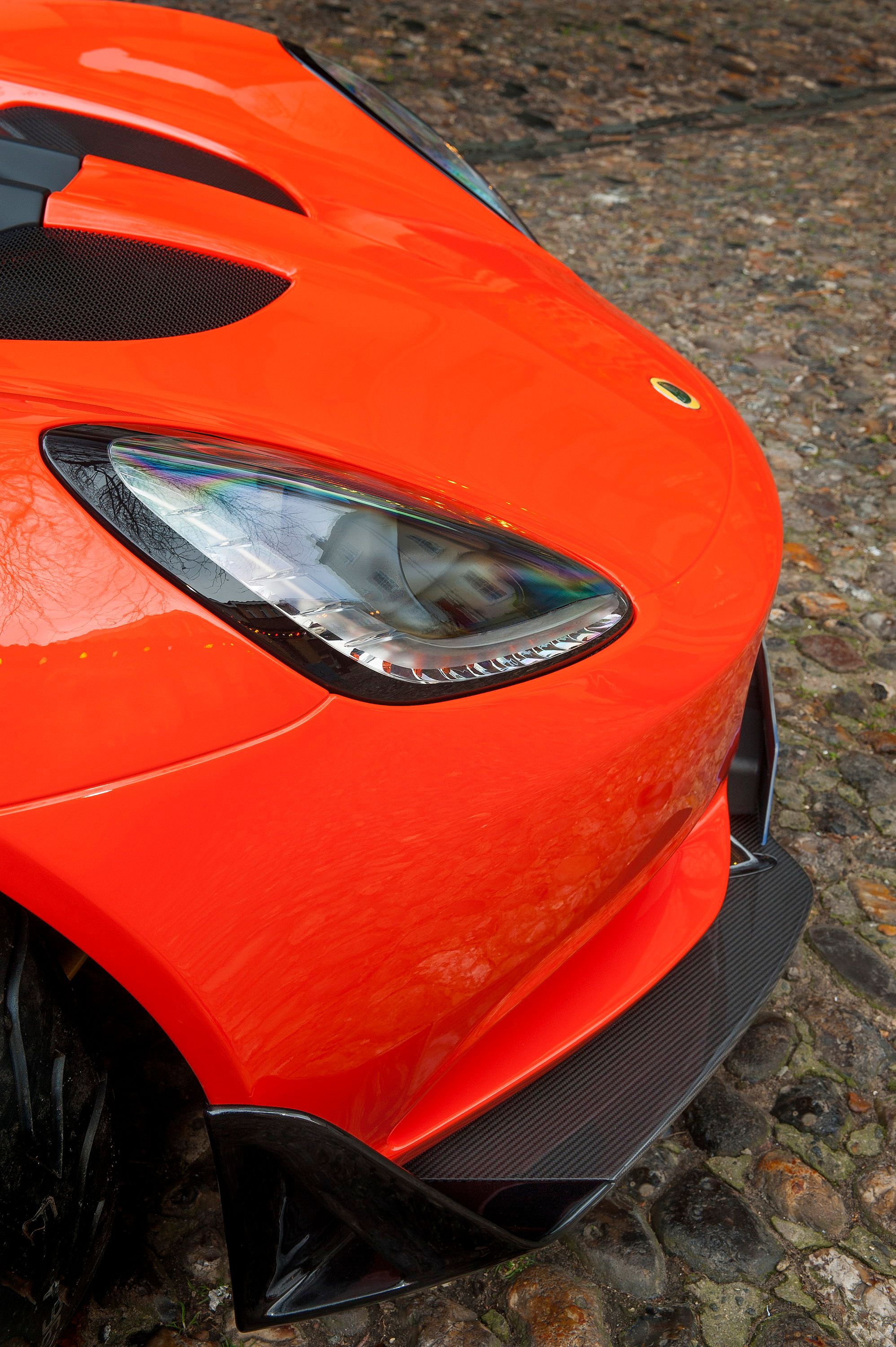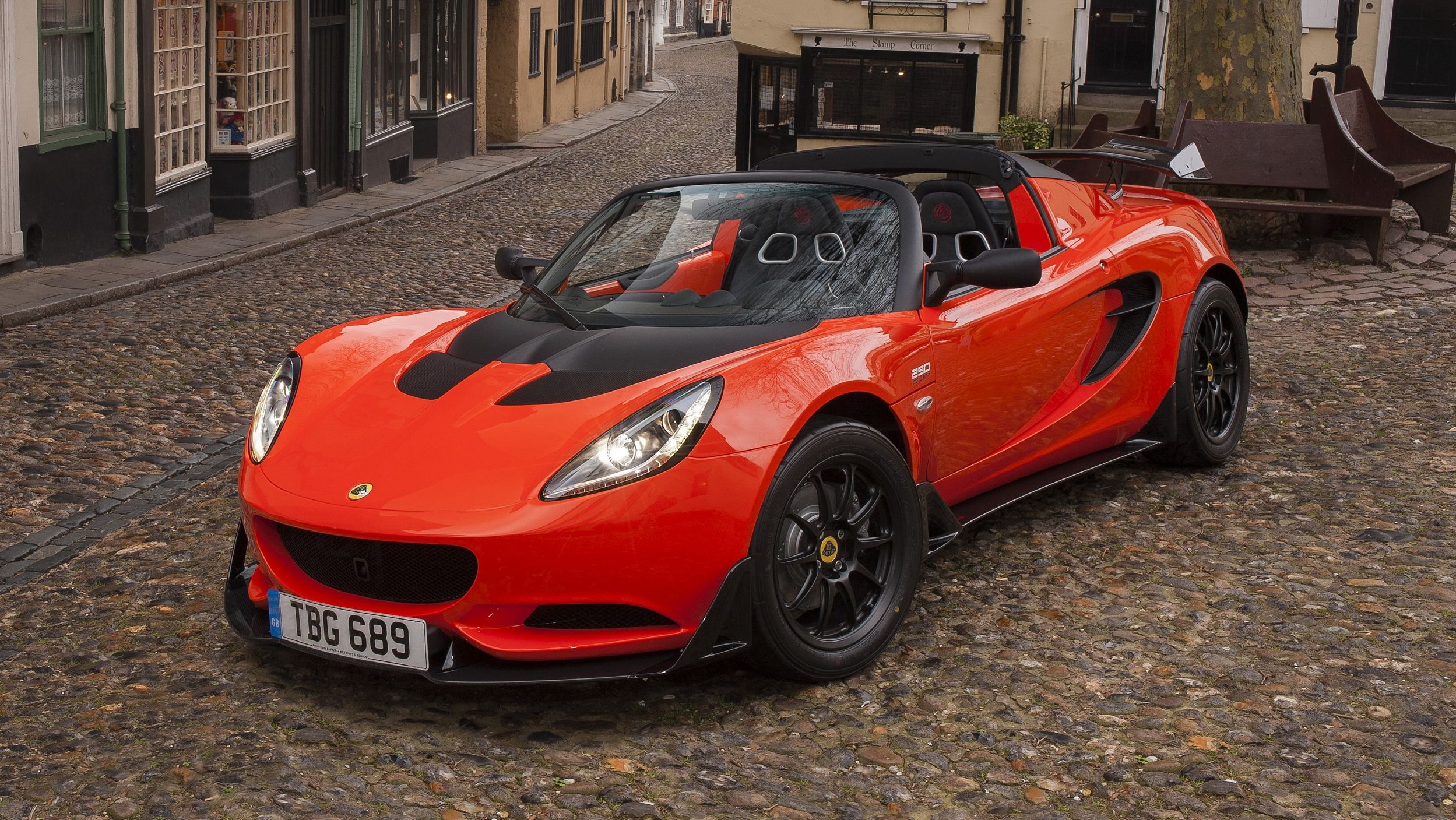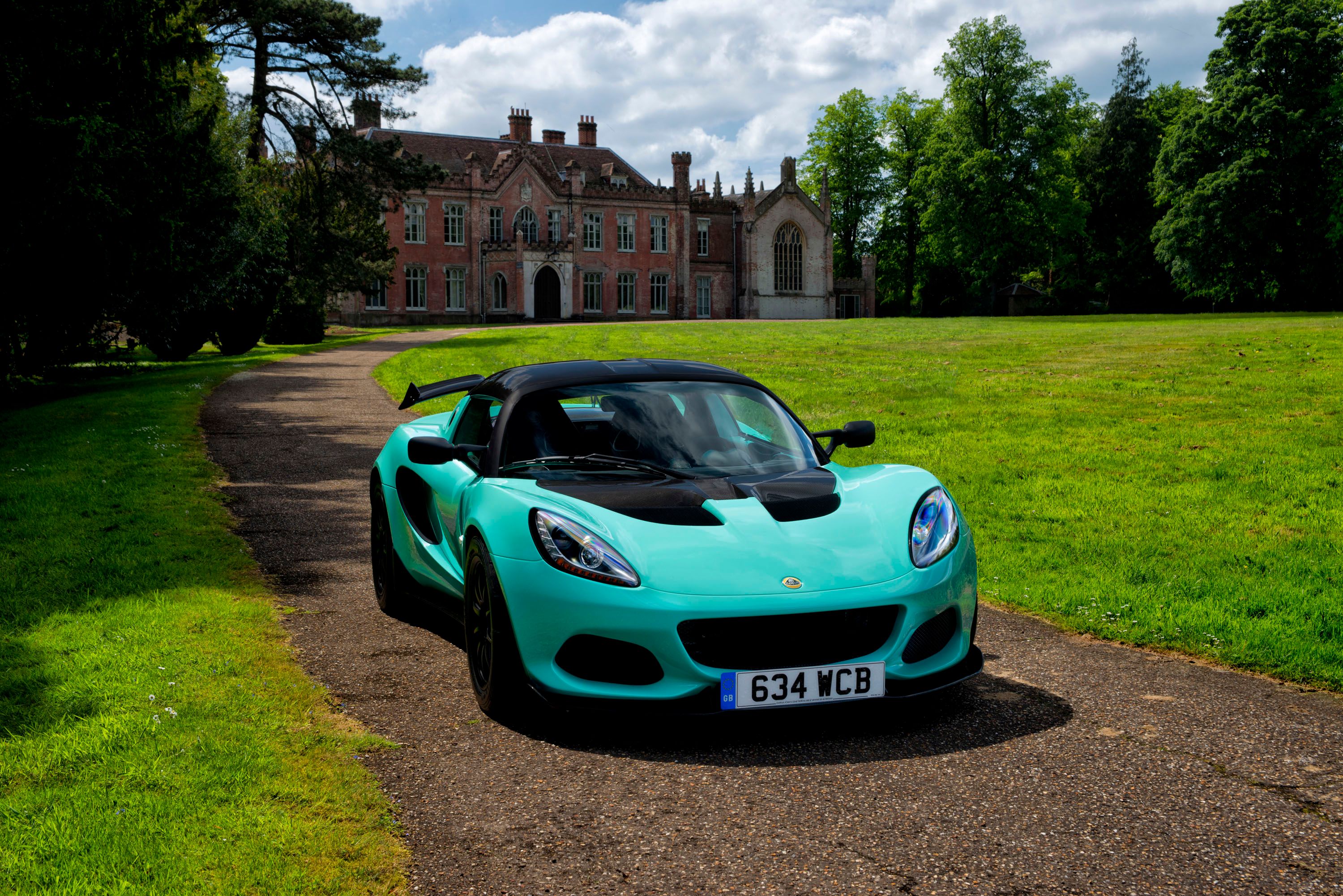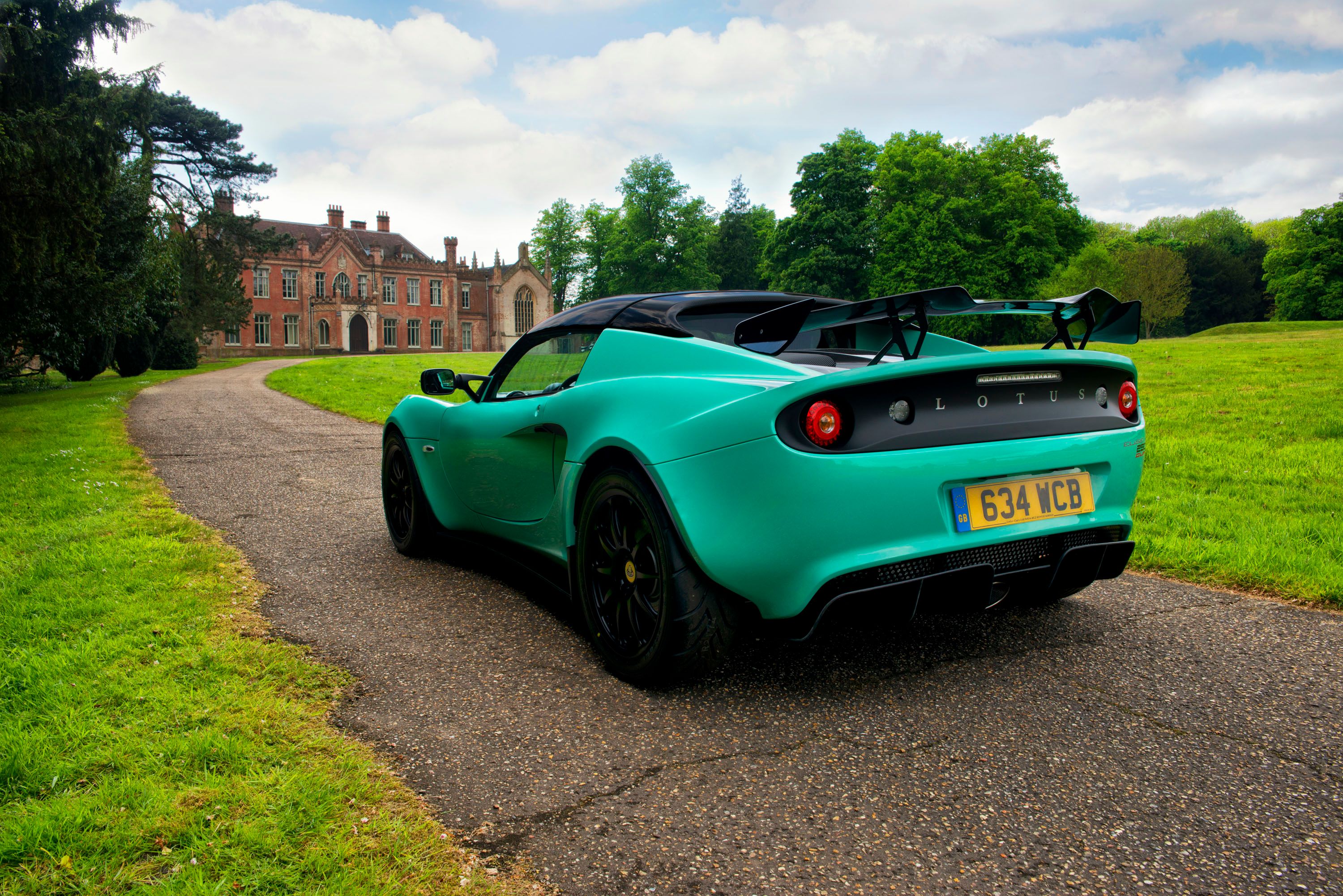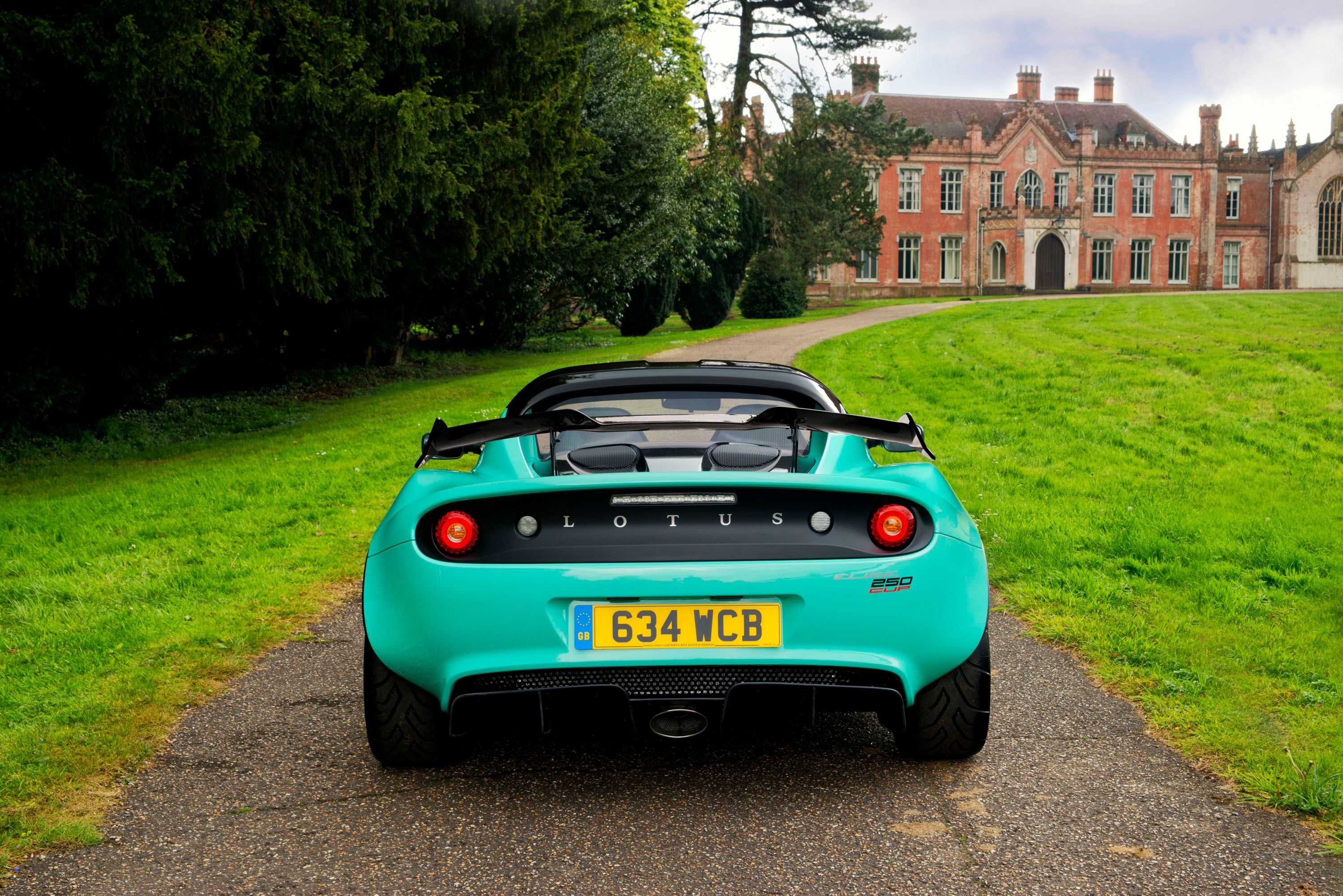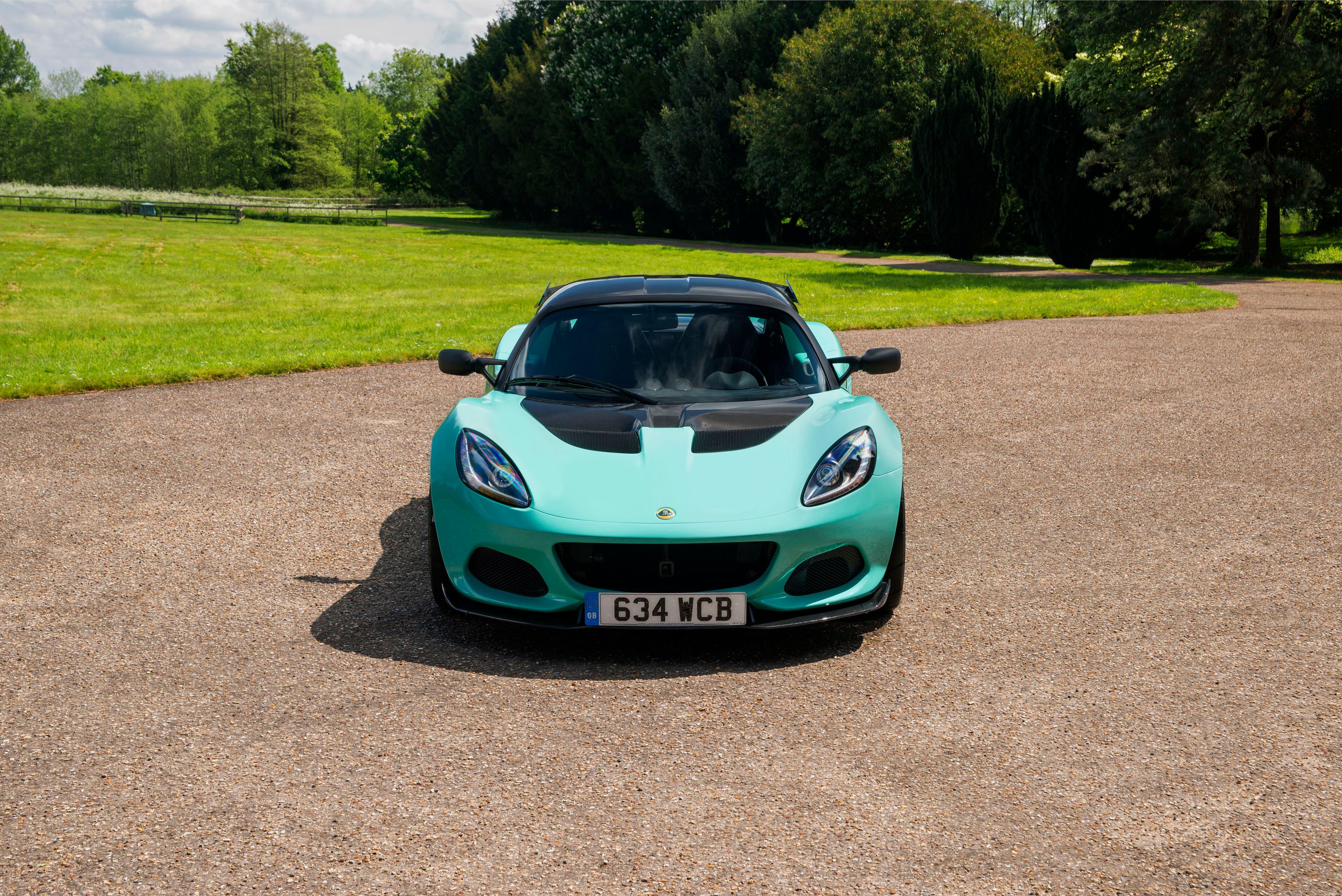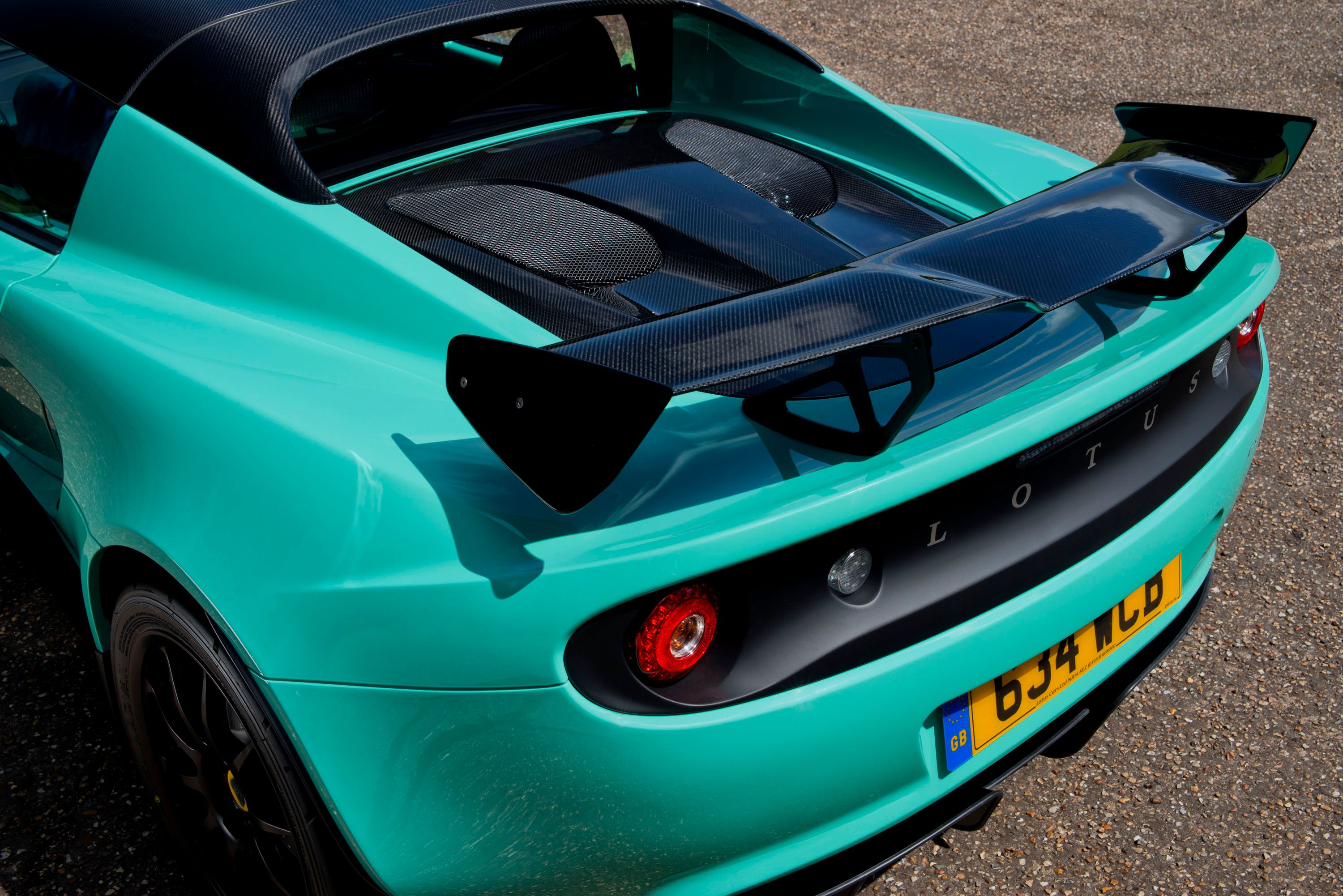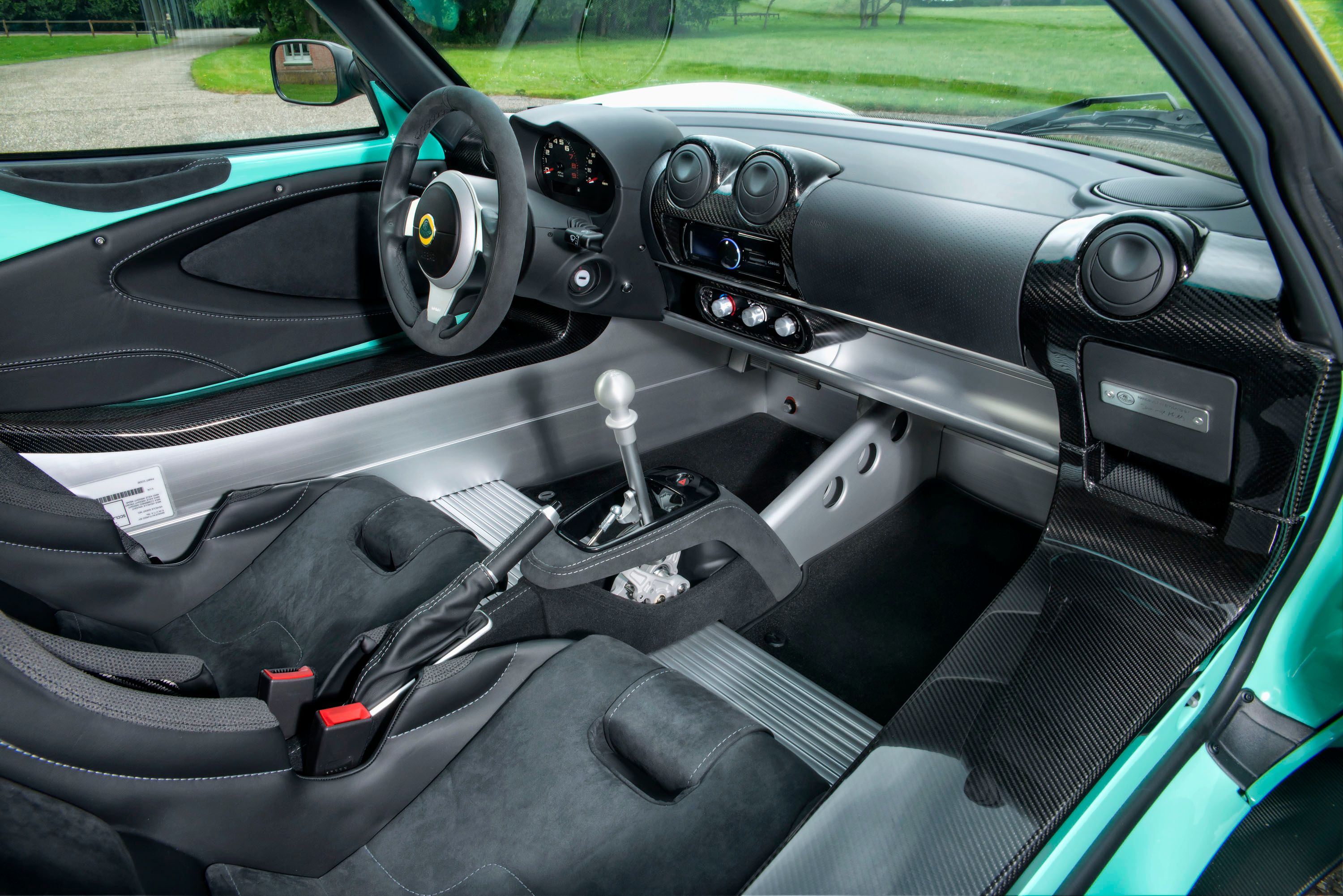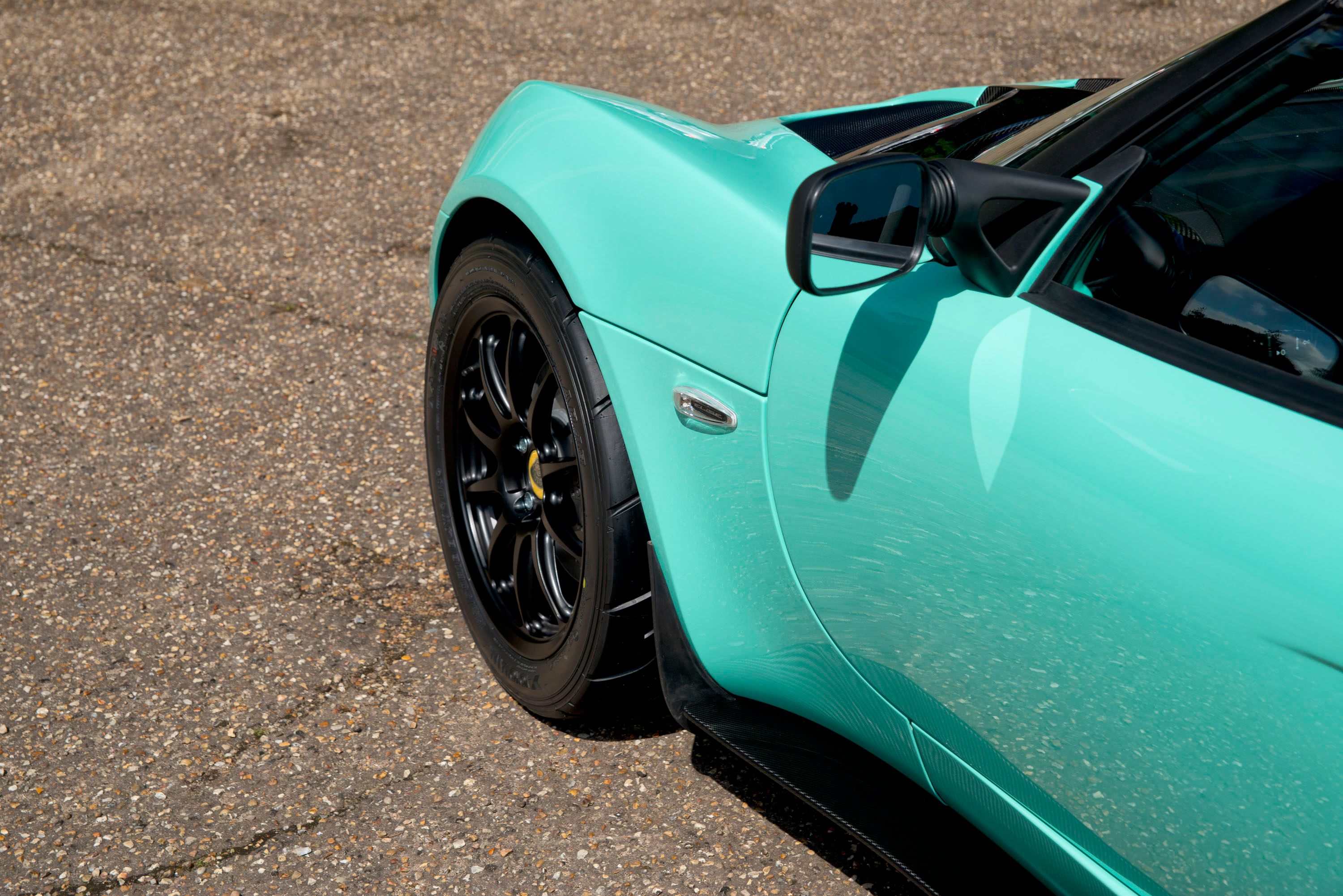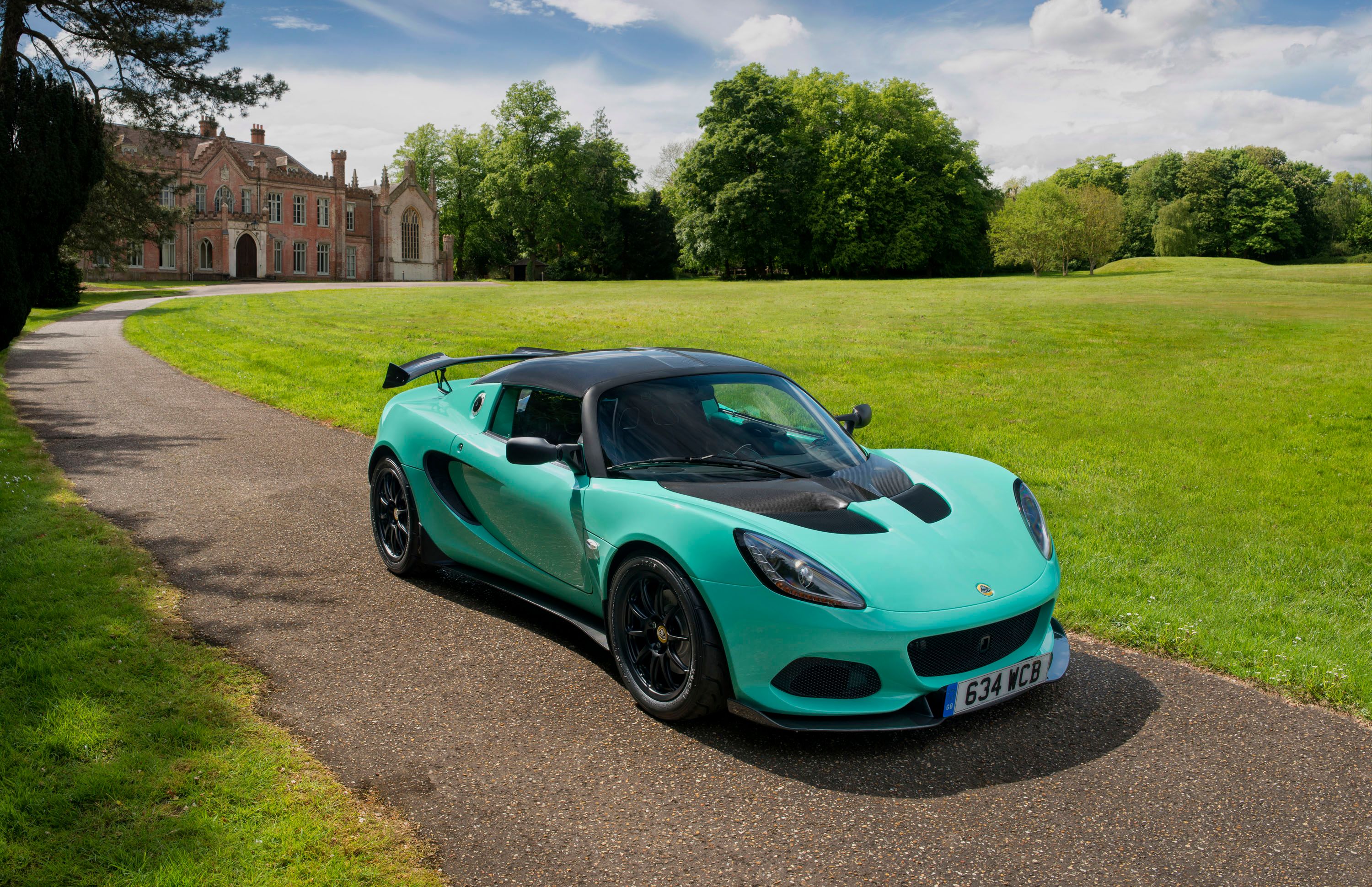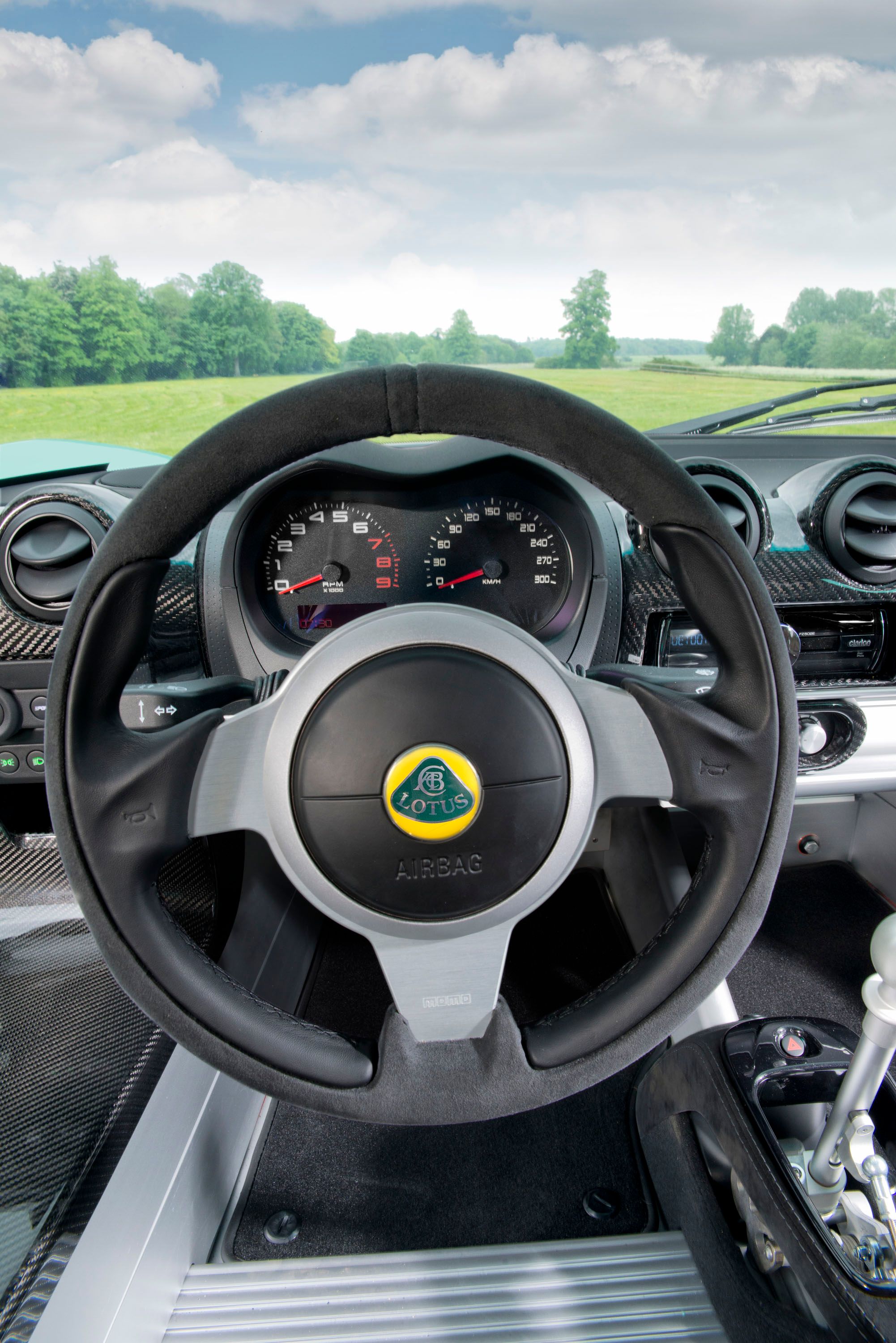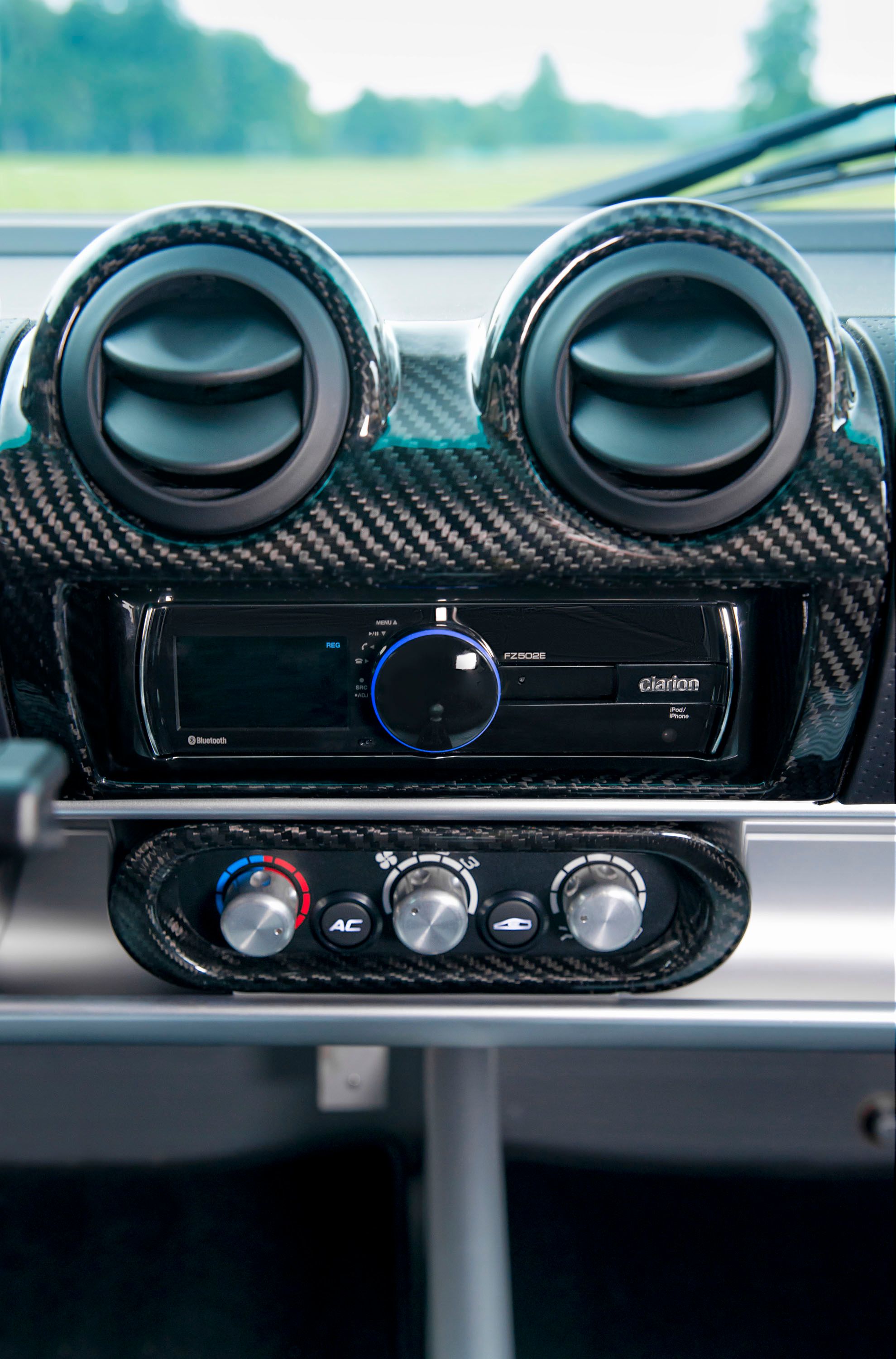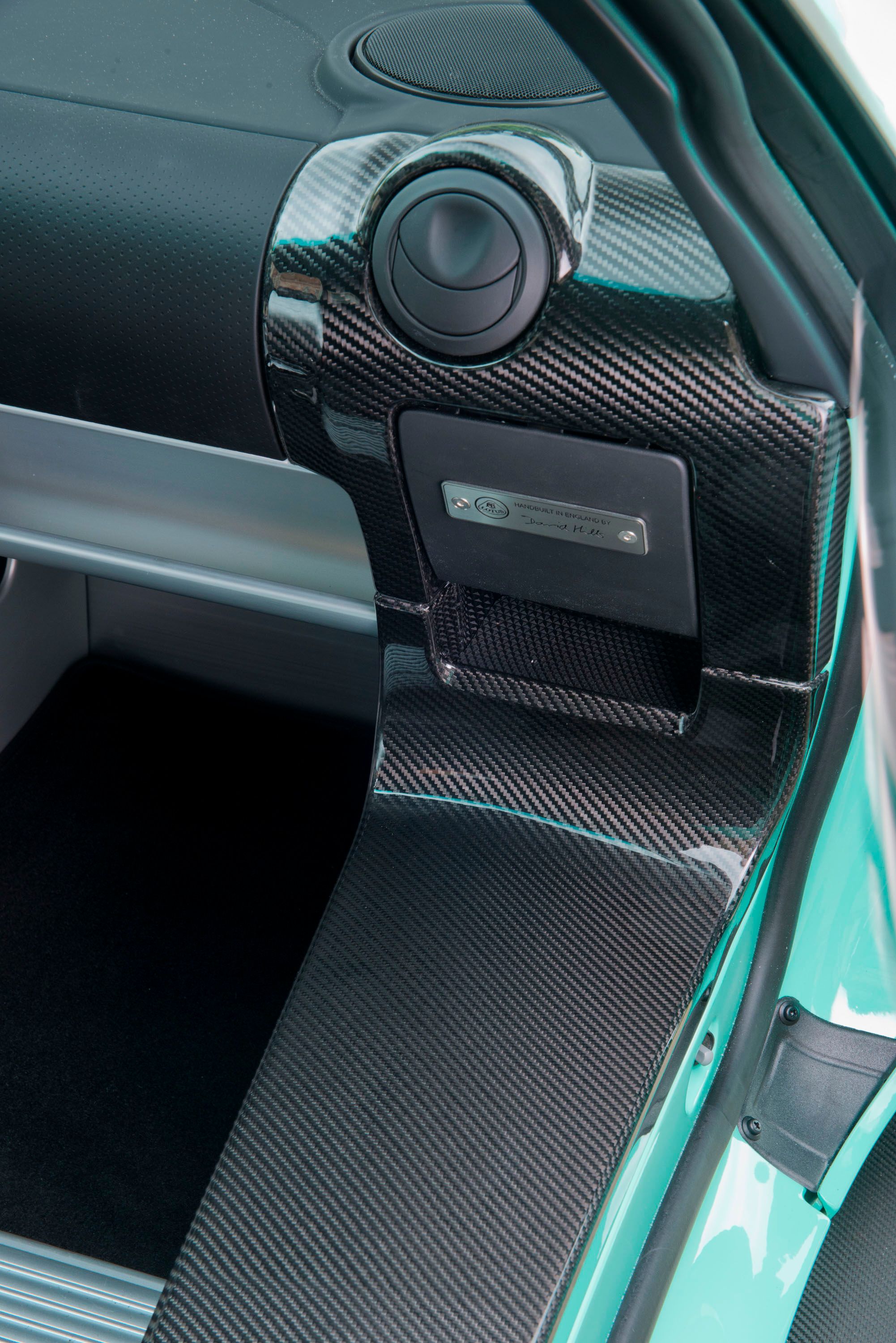2015 was a busy year for Lotus.->ke49 Not only did the Brits revamp the Elise->ke1678 and Exige->ke525 with updated models, but they also launched a significantly upgraded Evora,->ke3240 the brand-new 3-Eleven,->ke5095 and announced plans to develop their first-ever SUV. Having already launched the new Lotus Exclusive customization program in January 2016, the brand introduced the beefed-up Elise Cup 250 as its first new model for the year.
Essentially an lighter and more powerful version of the previous Elise Cup, the Cup 250 is the quickest road-going Elise->ke1678 ever from 0 to 60 mph as well as on Lotus' iconic Hethel test track. As with most updates, the Cup 250 comes with new and revised features, extra options, and access to the company's new Lotus Exclusive program. The Cup 250 joins the less track-oriented Sport and Sport 220 in the 2016 Elise lineup. The new Elise Cup 250 went on sale in most markets in April 2016 and in 2017 gained an update with revised looks and aerodynamics. Unfortunately, the sports car won't cross the pond to the U.S., where Lotus can only sell the Evora 400 due to America's strict safety requirements.
Keep reading to find out more about the Lotus Elise Cup 250.
2016 Lotus Elise Cup 250
- Make: Array
- Model: 2016 Lotus Elise Cup 250
- Engine/Motor: inline-4
- Horsepower: 243 @ 7200
- Torque: 184 @ 3500
- Transmission: 6 speed manual
- [do not use] Vehicle Model: Array
Exterior
If you're familiar with the previous Elise S Cup, the Cup 250 won't take you by surprise. Styling-wise, both are almost identical, which is far from surprising given that most recent updates have remained similar to their predecessors. Is this a bad thing? Depends on where you stand, but I think that the Elise sports a timeless design that will look fresh for many years to come.
A closer look at the car reveals that the Cup 250 is a perfect copy of last year's S Cup. Essentially a standard Elise on steroids, the Cup 250 features an aggressive aero pack that includes a protruding front splitter, massive side skirts, a race-spec rear diffuser, and a large rear wing. Just like its predecessor, the front hood is half body-colored and half black, while both the wheels and the side intake inserts are also finished in black.
There are two notable differences that set the new Cup model apart from its forerunner. The mirror caps are black instead of silver and the roadster is now the standard body style, with a hard-top available as an option.
Speaking of options, the Cup 250 can also be ordered with a Carbon Aero pack that replaces the standard front splitter, rear wing, rear diffuser and side skirts with carbon-fiber components. This reduces mass by a 10 kg (22 pounds), taking the car's curb weight down to just 921 kg (2,030 pounds). That's a 21-kg (46-pound) reduction compared to the previous S Cup and a 3-kg (7-pound) decrease over the track-only Elise S Cup R.
The sports car can be had in one of ten exterior colors. Two are no-cost options, seven are metallic, and one is the Signature Grey option. Lotus says that the Cup 250 can be personalized through its Exclusive program, meaning customers should be able to pick between race-themed body colors such as Essex Blue and Motorsport Black, as well as a range of racing stripes.
New For 2017
*** Lotus ditched the quad taillights arrangement in favor of a dual light layout with smaller reverse lights ***
The Elise Cup 250 carries over mostly unchanged design-wise, but Lotus updated a few features in order to improve aerodynamics. A closer look up front reveals larger intakes on the sides and a redesigned carbon-fiber splitter. The latter no longer has the big winglets on the sides. Moving onto the sides, the most noticeable change is the redesigned intake in the rear fender. Although it remained virtually unchanged in terms of size and shape, the vent is no longer split into two distinct elements by a center-mounted wing.
More noticeable changes are visible around back, starting with the reshaped carbon-fiber wing. Below, Lotus ditched the quad taillights arrangement in favor of a dual light layout with smaller reverse lights on each side of the "Lotus" lettering. The diffuser was also redesigned, and, even though it's smaller and doesn't look as menacing as before, it makes the Cup 250 easier on the eyes.
In addition to these visual changes, Lotus also managed to reduce the curb weight of the car by using additional carbon-fiber and aluminum elements, as well as a plastic rear window.
Interior
The interior of the Cup 250 is also similar to the S Cup, but Lotus is offering several updates with the new model. Arguably the most important of them are the carbon sport seats. Available in either black or red Alcantara, the race-inspired seats come standard. Other equipment offered at no extra cost include a leather-wrapped steering wheel, a polished aluminum gear knob, a leather handbrake sleeve, engine start push button, and driver and passenger air bags.
The options list is quite extensive for a Lotus and includes a matt black hard-top, air conditioning, cruise control, floor mats, quick-release steering wheel and airbag delete, harness cross bar and four-point harnesses, a fire extinguisher and battery isolator, and a leather trim pack. There's also an integrated in-car entertainment system with iPod connectivity and Bluetooth functionality.
Buyers who want to customize the car beyond the standard options can take it to Lotus Exclusive for additional leather and contrast stitching colors, among other features.
New For 2017
The cabin carries over unchanged, so customers will enjoy the standard in-house manufactured carbon-fiber race seats in black Alcantara with contrast red or yellow stitching, matching door panels, and exposed aluminum and carbon elements. Optionally, it can be equipped with Alcantara-trimmed steering wheel and sill covers, leather or tartan trim packs, bodywork keyed color inserts for the sports seats, transmission console and HVAC surround, and additional weight saving carbon components including face-level vents, HVAC surrounds, and sill covers.
Drivetrain
This is where the Cup 250 becomes really interesting, as the supercharged 1.8-liter four-cylinder engine borrowed from the S Cup has received a significant upgrade. The revised mill cranks out 243 horsepower at 7,200 rpm and 184 pound-feet of torque between 3,500 rpm and 5,500 rpm, a 26-horsepower increase over the previous Cup model. The four-banger mates to a revised six-speed manual gearbox with sports ratios and a Bosch locking differential. The Lotus Dynamic Performance Management (DPM) now provides a Sport mode that increases throttle response, lowers traction slip thresholds and removes understeer recognition.
These updates, the extra oomph, and the lighter curb weight enable the Cup 250 to hit 60 mph from a standing start in only 3.9 seconds, making it the fastest road-going Elise ever. Also, the Cup 250 lapped the Hethel test track in one minute and 34 seconds, shaving an impressive four seconds off the previous Elise Cup time on the same circuit. This significant improvement was aided by the aerodynamically optimized body kit that provides 66 kg (145.5 pounds) of downforce at 100 mph and an impressive 155 kg (341.7 pounds) at a maximum speed of 154 mph. Speaking of which, maximum speed has increased by 14 mph compared to the previous version.
Drivetrain Specifications
|
Type |
All alloy, 1.8 litre DOHC 4-cylinder, dual VVT-i, 16-valve with chargecooled Magnuson R900 supercharger utilising Eaton TVSTM technology |
|
Max power |
243 HP @ 7,200 RPM |
|
Max torque |
184 LB-FT @ 3,500 - 5,500 RPM |
|
0-60 mph |
3.9 seconds |
|
Max speed |
154 MPH (248 KM/H) |
|
Transmission |
6 speed manual gearbox with sports ratios |
New For 2017
The Elise Cup 250 carries over with the same 1.8-liter four-cylinder engine rated at 243 horsepower and 184 pound-feet of torque. And, despite being up to 158 pounds lighter than last year's car (depending on packages selected), its performance features remain unchanged. Specifically, the sports car needs 3.9 seconds to hit 60 mph toward a top speed of 154 mph. Owners will get the same race-inspired chassis features, including the fully independent double wishbone suspension, front anti-roll bar, Bilstein dampers, Eibach coaxial coil springs, AP Racing and Brembo brakes.
Chassis, Suspension and Brakes
The Elise Cup 250 rides on a lightweight, extruded aluminum bonded chassis structure and carries over the motorsport-derived suspension and braking components from the previous Elise Cup. The system includes an adjustable front anti-roll bar, Bilstein sports dampers and Eibach coaxial coil springs and double wishbone suspension. Stopping power comes from AP Racing twin-piston front calipers and Brembo single-piston rear calipers that work in conjunction with a track-tuned ABS system. The lightweight, forged alloy wheels measuring 16 inches in the front and 17 inches in the rear are wrapped in Yokohama AO48 rubber.
Prices
The Lotus Elise Cup 250 retails from £45,600 in the United Kingdom, which represents a £15,700 premium over the standard Elise Sport and a £9,100 premium over the Elise Sport 220, which is powered by the same supercharged, 1.8-liter, but rated at 217 horsepower. In Germany, the new sports car fetches €61,100 before options. Due to safety regulations, the Lotus Elise isn't available in the United States.
Competition
Porsche 718 Boxster
The new Elise Cup 250 arrives just in time to go against the revised Porsche Boxster, which has been renamed the 718 Boxster. Now powered by a 2.0-liter flat-four, the base Boxster comes with 300 horsepower and 280 pound-feet at its disposal. But, despite being more powerful than the Lotus, the Porsche is significantly heavier, which makes it slower than the Cup 250. Charging from 0 to 60 mph takes 4.9 seconds with the manual, 4.7 ticks with the PDK, and 4.5 seconds with the PDK and the Sport Chrono package. Move up the range and you can get the Boxster S with 350 horses and 309 pound-feet coming from a 2.5-liter flat-four. However, this version won't help you defeat the Lotus in a straight line, as the quickest variant with PDK and Sport Chrono is still a tenth-second slower at four seconds from 0 to 60 mph. On the other hand, the 718 Boxster has a far superior top speed, rated at 170 mph for the base model and 177 for the S variant. As far as prices go, the Boxster is the slightly more affordable roadster in base trim, priced from £41,739 in the U.K. Unlike the Elise Cup 250, the 718 Boxster is available in North America.
Find out more about the Porsche 718 Boxster here.
Conclusion
The Elise Cup 250 might be nearly identical to its predecessor inside and out, but I have to give Lotus credit for doing what it knows best. Lighter and quicker cars. Not only more powerful and significantly quicker than the previous Elise Cup, the Cup 250 has shed so many pounds that it is know lighter than the race-spec version of Elise S Cup. That's an aspect gearheads should consider when buying a brand-new track-toy and a feat that should motivate Porsche to develop a new Boxster Spyder. The Elise might be a little long in the tooth, but it looks like Brits aren't ready to give up on it just yet.


